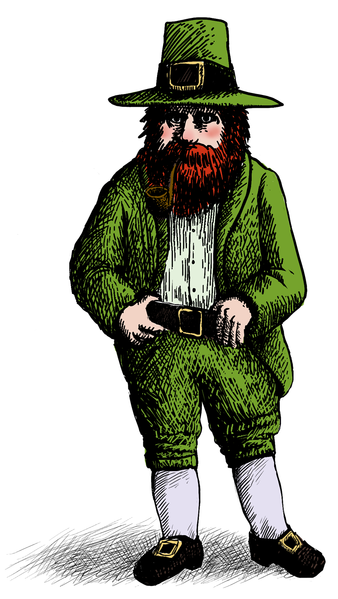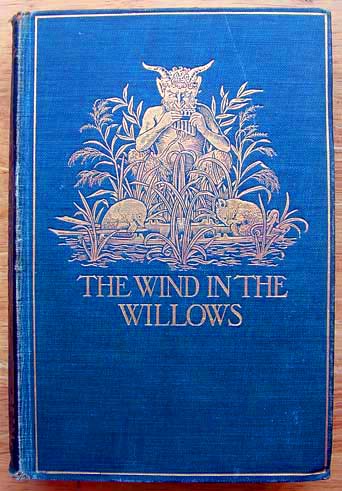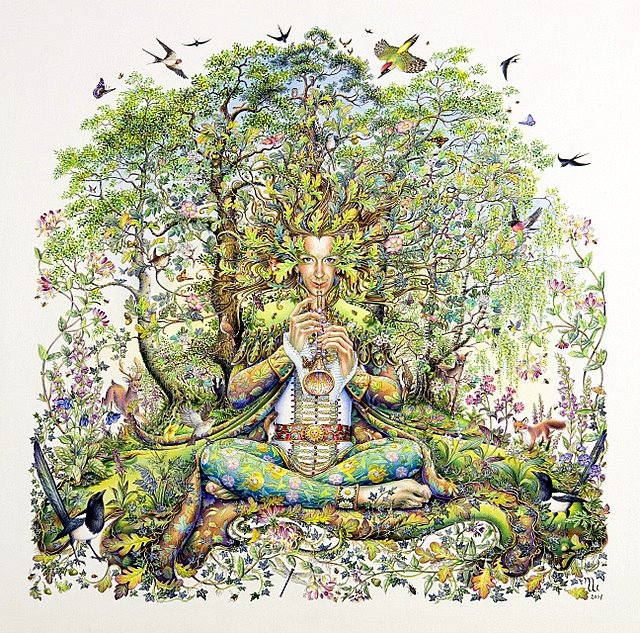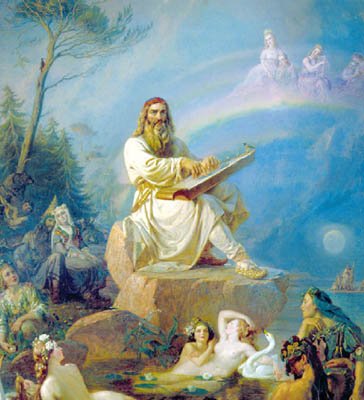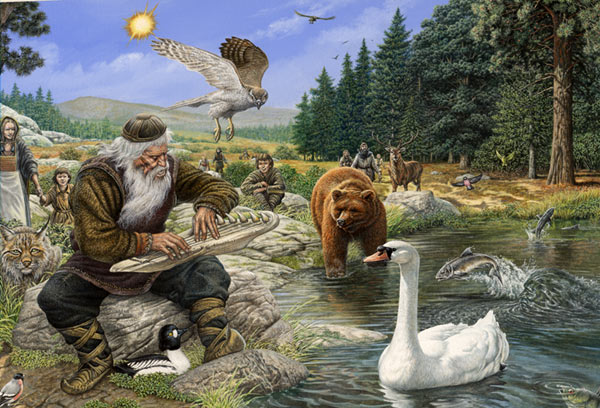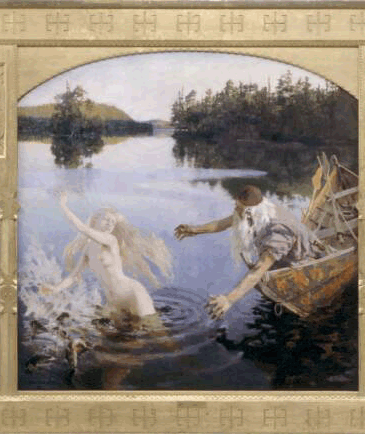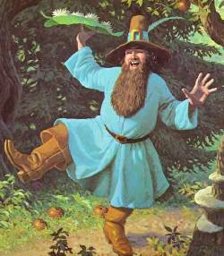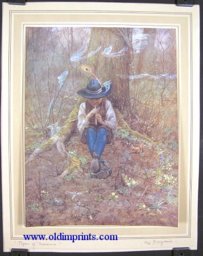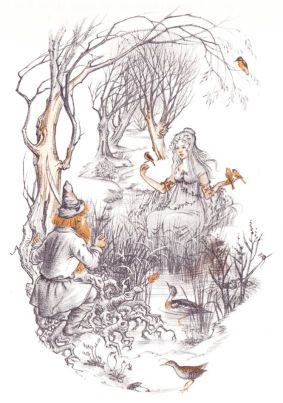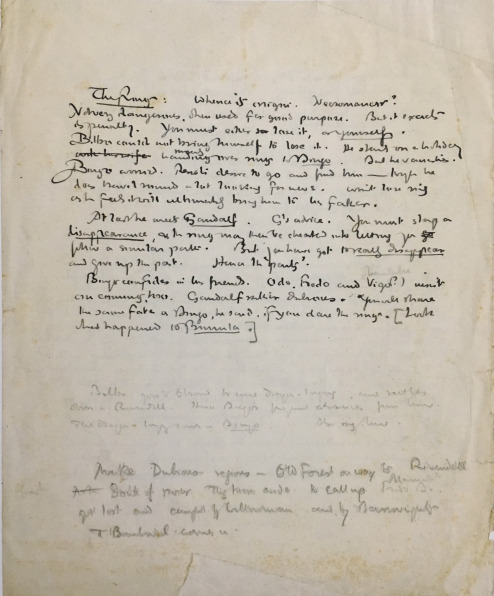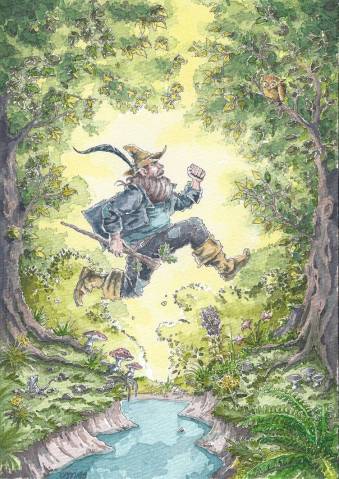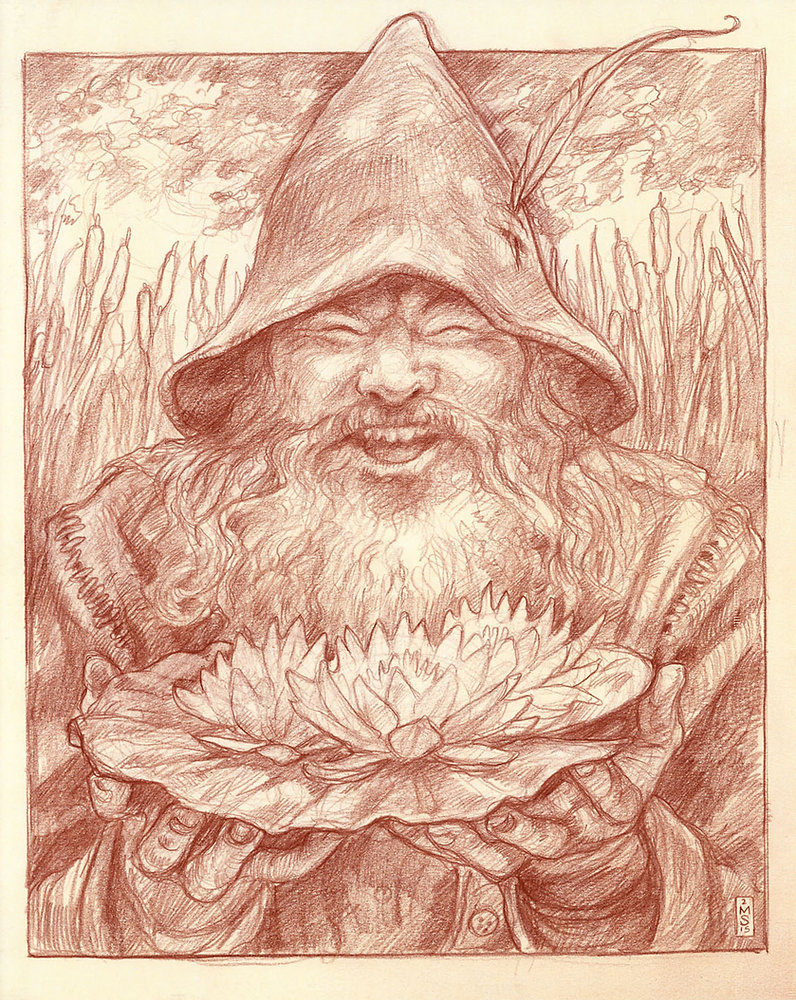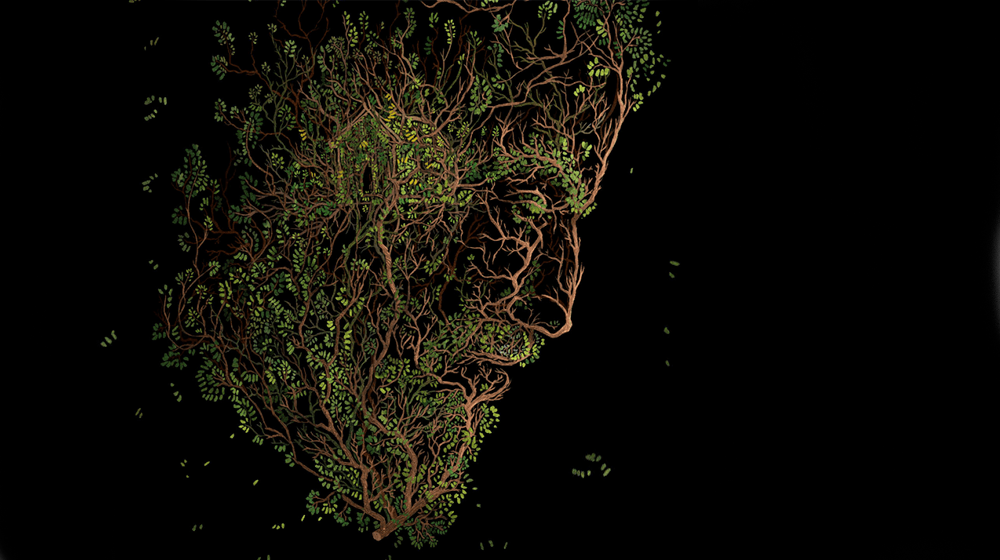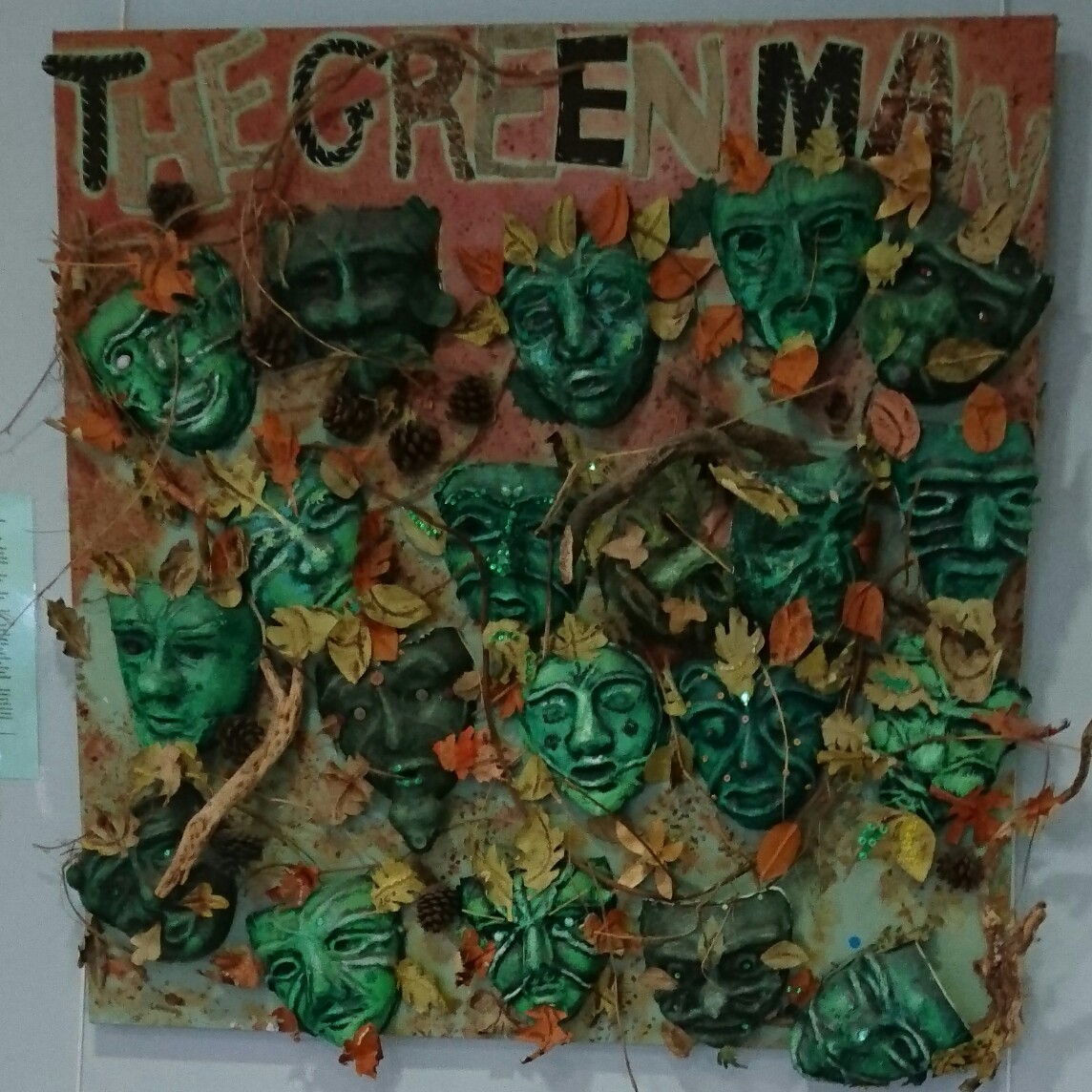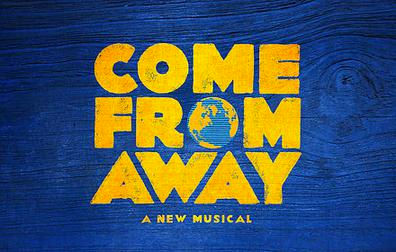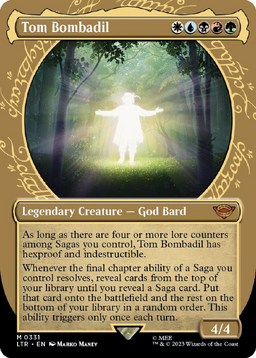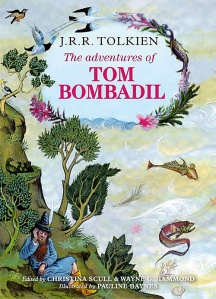Tom B: Peeling the Onion (Collegium 1)
Post Reply 
Page
<1 121314
’Do not laugh! But once upon a time (my crest has long since fallen) I had in mind to make a body of more or less connected analysis on the subject of Tom Bombadil, which I could dedicate to all Plaza enthusiasts. With that aim in mind I started The Great Work, with aid of some 30 +supportive loremasters. With that great aim in mind I spent almost a year searching on and offsite for anything connected to Tom, and my colleagues did likewise. An editorial committee was set up, a comprehensive topic list agreed, and projects assigned. But RL, loss of supporting project managers, and the sheer weight of coordinating such a large project and number of people finally brought my work to a halt. I had no need to leave scope for other minds, for they were already busy at work and have continued to offer their views in a multitude of threads from the inception of The Great Work, until today’ {With apologies to J R R Tolkien and
Letter # 131}
However, the material acquired during that process still remains, and since then, even more views on Tom have seen the light of day- each one usually more absurd than the last.
So, rather than let all that research go to waste I have decided to use it to peel the layers of the onion that is Tom B and his fair Lady Goldberry ,and provide a resource base for others who might wish to take up the torch where I laid it down.
This will be a very lengthy process and I will start it by simply listing some of the many views as to who or what Tom is. It is not intended to be comprehensive. Some of them might surprise you!
The Many Headed Hydra- Interpretations of Tom
Tom is:
Adam (and Goldberry is Eve- both are in their unfallen state)
Aule(And Goldberry is Yavanna)
A being thrown-up at the beginning of time
The Brown Man
The Chieftain of Birds
One of the oldest inhabitants of King Bonehig’s kingdom
The Christian concept of stewardship
Christ (almost)
A daimonic being who lived before history
A Dutch Doll
The spirit of Ea itself
Earth’s Gaia
Eru
Eru’s representative in ME
An Enigma
The FIsher KIng
The Green Man
The Jungian concept of the ’Original Man’
The last Moorish King of Granada
A Maia ’gone native’
A Maia of Yavanna
The last Maia to enter Ea
A Merlin type figure
The spirit of ME
A nature spirit
A nature sprite
The embodiment of nature’s moral neutrality or ambiguity
Embodies Nature’s pattern
The Spirit of Nature
A spirit of the vanishing Oxford and Berkshire Countryside
A pre-existing spiritual being who became embodied as the spirit of nature
The One
Orome
Pan
Puck
The Reader
The opposite of Shelob but amoral
A spontaneous generation from the land
JRR Tolkien
Tulkas
Ulmo
Uncle Tim’s nephew in The Root of the Boot in The Advenures of Tom Bombadil
Based on Vainamoinen from the Kalevala
Wayland Young
The list goes on!
N.B. I am indebted to Charles Noad’s compilation of the various interpretations of Tom in
Leaves from the Tree for much of this list.
Reverse Sort Order
Share Topic












Topic Search
Topic Options
halfir
Posted: 28/Jul/2009 at 2:14am
Irmo Points:
42854 Posts:
41004 Joined:
10/Mar/2002 Status:
Offline  Supporting Member
Quote Reply
Supporting Member
Quote Reply  Topic: Tom B: Peeling the Onion (Collegium 1)
Topic: Tom B: Peeling the Onion (Collegium 1)
I think it's more
Tolkien the Trickster with Bombadil's characterisation and we are the vicitms!

Dorwiniondil
Posted: 28/Jul/2009 at 2:58am
Warrior of Imladris Points:
5508 Posts:
5093 Joined:
27/Oct/2007 Status:
Offline  Supporting Member
Quote Reply
Supporting Member
Quote Reply 
Same here!
I don't think the classic "trickster" figure quite works - it generally involves dubious dealings, and often actual malice; for instance, Hermes was also the patron of thieves, and Loki ends up on the wrong side at Ragnarok. Perhaps the Joker, as in a deck of cards - the one that doesn't form part of any suit - though not the Joker as a wild card, taking on the identity of any other: Bombadil is always resolutely himself.
"I am no longer young even in the reckoning of Men of the Ancient Houses."

PauloIapetus
Posted: 28/Jul/2009 at 7:11am
New Soul Points:
520 Posts:
229 Joined:
21/May/2009 Status:
Offline
Quote Reply 
As I already I said, I wholeheartedly agree that Tolkien as a
lewd bricouleur has several traits of the trickster's archetype, the same can be said about Bombadil. IMO.
If, by one hand, we have, 'negative' tricksters such as Loki ( linguisticaly connected to Fire ( Loge) and, therefore, to Prometheus, and, quite probably Phaëton, both of them can be viewed as prototypes of Fainor/Feänor) and the ocassionaly devious examples of Coyote and Raven, by another hand, in several mythologies, the tricksters are preservers of the universal Order, by introducing Randomness, free will and "fire" into the fabric of Creation.
In many mythologies, the creation of humanity is a by-product of the acts of the trickster, the same might be said about Tolkien , since that the Creation of Elves and Men is a part of the Third theme of Ilúvatar that was raised against Melkor's Discordy . Not coincidentaly( I guess), Tolkien made the fire Melkor's favorite "porfolio" in Myths Transformed, diputing it with his fellow Vala , Tulkas, called Auron as a wielder of Fire (Gandalf and the Flame of Anor, anyone?)
In one of my previous posts I've added a small list of characteristics included in the Trickster's archetype that can be found in Bombadil's persona ( quoted in red letters and with bold emphasis right below):
http://en.wikipedia.org/wiki/List_of_tricksters_in_fiction
- Hynes and Doty, in Mythical Trickster Figures (1993) state that every trickster has several of the following six traits:[1]
- fundamentally ambiguous and anomalous
- deceiver and trick-player
- shape-shifter
- situation-inverter
- messenger and imitator of the gods
- sacred and lewd bricoleur
The tricks that are used by Bombadil seem to be limited to enchanting spells that allow his "fugues" of the other Elemental powers that are "mastered" by him, but they are still 'tricks" in a broader sense, spells akin to the charming bewildering hexes of Leprechauns ( thal allow them to escape from their captors in the blink of an eye).

PauloIapetus
Posted: 28/Jul/2009 at 7:39am
New Soul Points:
520 Posts:
229 Joined:
21/May/2009 Status:
Offline
Quote Reply  I don't think the classic "trickster" figure quite works - it generally involves dubious dealings, and often actual malice; for instance, Hermes was also the patron of thieves, and Loki ends up on the wrong side at Ragnarok.
I don't think the classic "trickster" figure quite works - it generally involves dubious dealings, and often actual malice; for instance, Hermes was also the patron of thieves, and Loki ends up on the wrong side at Ragnarok.
Neither do I and the other poster that mentioned the trickster's parallel, Dorwiniondil. The Trickster is, itself ,a 'tricking' Archetype
that defys classifications. Moreover, Tolkien had a tendence of 'sanitizing" and straightening the mythological archetypes ,dividing the traits found in one figure between two or more characters of his Legendarium in order to create a 'high' mythology, 'purged of the gross ".
For instance, Oromë was derived of the
Horned God archetype, sharing a variation of one of his names, Araw, derived from the Welsh Arawn, and his role as leader of the Wild Hunt ( his maia servant ,Tilion, also shares this particular trait meaning , literaly , the Horned One) however his sinister, underworldly, atributes (as the Norse/Celtic version of Hades) were downplayed and divided between Melkor, Mandos and himself.
It's natural that the Trickster' God would have been presented by Tolkien in a similarly "purged" version of his most obnoxious and malicious traits. Several itens of the Trickster's personality were included in Sauron, as a Dark Lord and tempter, and as an analogous to Odin ( that was, frequently, presented as a Trickster God companion of Loki). The Shape Changer aspect is one os his most notorious atributes.
Edited by PauloIapetus - 13/Nov/2009 at 11:30pm

halfir
Posted: 12/Aug/2009 at 12:06am
Irmo Points:
42854 Posts:
41004 Joined:
10/Mar/2002 Status:
Offline  Supporting Member
Quote Reply
Supporting Member
Quote Reply  Dorwiniondil has drawn my attention to this article by Ursula Le Guin
which contains some fascinating comments on Tom Bombadil, and on Tolkien's rhythms, both poetic and prose. An insightful and fascinating analysis which is well worth the read.
http://www.lordotrings.com/noflash/books/meditations.asp
My thanks to Dorwiniondil for drawing it to my attention (especially as the book has been on my shelf for absolutely ages and I've only read a couple of essays!)
Dorwiniondil has drawn my attention to this article by Ursula Le Guin
which contains some fascinating comments on Tom Bombadil, and on Tolkien's rhythms, both poetic and prose. An insightful and fascinating analysis which is well worth the read.
http://www.lordotrings.com/noflash/books/meditations.asp
My thanks to Dorwiniondil for drawing it to my attention (especially as the book has been on my shelf for absolutely ages and I've only read a couple of essays!)

Tree
Posted: 12/Aug/2009 at 3:44am
Hedgekeeper of Buckland Points:
3896 Posts:
5728 Joined:
07/May/2007 Status:
Offline
Quote Reply 
Wow- fascinating- analysing the text to a rhythmic level. I like the comment:
"Like Charles Dickens and Virginia Woolf, Tolkien must have heard what he wrote."
Because I think this is important to any book, whether designed purely to be read or not. A good example of a book that doesn't read aloud well. At all. Is Patrick McCabe's 'DEAD School'- I really dislike its colloquialistic Irish style. It tries hard to sound like someone is speaking, but ends up just sounding vaguely ridiculous...
"We like picnics don't we children oh yes we do we like them the best of all because you get boiled eggs and cakes and sweets and buns and lots of yummy orange and you can sit out in the field with the bees buzzing and the birds singing and the farmer doesn't say get off my land because at picnics everybody is happy at least they are supposed to be"
Deliberately missing out commas to express decline of a man's sanity is not witty at all. Thank goodness Tolkien was so good at phrasing, and rhythm that
flowed.
Vive La Icon Revolution!

PauloIapetus
Posted: 12/Aug/2009 at 5:09am
New Soul Points:
520 Posts:
229 Joined:
21/May/2009 Status:
Offline
Quote Reply 
I already downloaded Le Guin's article to my PC a little time ago. The comments of her are always very insightful and full of meaning and humour.
http://greenbooks.theonering.net/tributes/files/ursula_leguin.html
"What kind of answer, after all, is it to drop a magic ring into an imaginary volcano? No ideologues, not even religious ones, are going to be happy with Tolkien, unless they manage it by misreading him. For like all great artists he escapes ideology by being too quick for its nets, too complex for its grand simplicities, too fantastic for its rationality, too real for its generalizations"
Ursula K. Le Guin
This is an oblique attack towards Michael Moorcock's and China Miéville's ideological criticisms of Tolkien. I belief that Ursula was right when she stated in her review of Iron Dream, the novel of Norman Spinrad:
http://www.depauw.edu/sfs/backissues/1/leguin1art.htm
On the back cover Michael Moorcock compares the book with "the works of J.R.R. Tolkien, C.S. Lewis, G.K. Chesterton, and Sir Oswald Mosley.... It is the very quintessence of sword and sorcery." None of the authors mentioned is relevant, except Mosley, but the reference to sword and sorcery is exact. The Iron Dream can be read as a tremendous parody of the subgenre represented by Moorcock's own Runestaff saga, and by Conan the Barbarian, and Brak the Barbarian, and those Gor books, and so on--"heroic fantasy" on the sub-basement level, the writing of which seems to be motivated by a mixture of simple-minded escapism and money-minded cynicism.
I think that Le Guin and Neil Gaiman are two of the fantasy writers that shown a better understanding about Tolkien's virtues and his main strenghts as a writer.
Here is a panel of Neil Gaiman in which he speaks about his literary debt to Tolkien, Lewis and Chesterton.
http://www.mythsoc.org/mythcon/35/speech/

Dorwiniondil
Posted: 12/Aug/2009 at 5:24am
Warrior of Imladris Points:
5508 Posts:
5093 Joined:
27/Oct/2007 Status:
Offline  Supporting Member
Quote Reply
Supporting Member
Quote Reply 
The trouble with "The Iron Dream" was that a lot of people just didn't get the satire, lapped the whole thing up and begged for more ... satire's a tricky thing.
"I am no longer young even in the reckoning of Men of the Ancient Houses."

PauloIapetus
Posted: 12/Aug/2009 at 5:50am
New Soul Points:
520 Posts:
229 Joined:
21/May/2009 Status:
Offline
Quote Reply 
Here Le Guins' ,subtly, contrasts the lack of tonal variations of
Lord of Suastika ( Iron Dream as is called in its original 'dimension' in which Hitler is a Sword and Sorcery' 's writer) with the rich orchestration of shifts that Tolkien introduced in Lord of the Rings. It's a very natural assumption to deduce that Lord of Suastika was a parody of Lord of the Rings to some extent, due to the year of fictional publication (1954) and his awarding with the 1957's World' s Fantasy.
To read a Spinrad short story is to be driven at top speed across the salt flats in a racing car. It's a powerful car and he's a great driver. He leaves the other racers way behind.
But a novel isn't a racing car. It is much more like a camel caravan, an ocean, liner, or the Graf Zeppelin. It is by essence large, long, slow, intricate, messy, and liable to get where it is going by following a Great Circle. Variety of pace, variety of tone and mood, and above all complexity of subject, are absolutely essential to the novel. I don't think Spinrad has faced that yet. His three long books are over-extended short stories. And they have been relative failures, because you do not make a novel by just stretching out a story.

PauloIapetus
Posted: 12/Aug/2009 at 7:02am
New Soul Points:
520 Posts:
229 Joined:
21/May/2009 Status:
Offline
Quote Reply  Her other essay in Language of the Night.
http://books.google.com.br/books?id=ksOjjuy3issC&pg=PA174&lpg=PA174&dq=the+language+of+the+night+tolkien&source=bl&ots=IjpTS9jqpF&sig=-dOSM_hysRAlPK5k9gXiTgRgAtg&hl=pt-BR&ei=WxCDSrGcGsaguAfYoaWtDg&sa=X&oi=book_result&ct=result&resnum=1
Her other essay in Language of the Night.
http://books.google.com.br/books?id=ksOjjuy3issC&pg=PA174&lpg=PA174&dq=the+language+of+the+night+tolkien&source=bl&ots=IjpTS9jqpF&sig=-dOSM_hysRAlPK5k9gXiTgRgAtg&hl=pt-BR&ei=WxCDSrGcGsaguAfYoaWtDg&sa=X&oi=book_result&ct=result&resnum=1

Dorwiniondil
Posted: 12/Aug/2009 at 7:20am
Warrior of Imladris Points:
5508 Posts:
5093 Joined:
27/Oct/2007 Status:
Offline  Supporting Member
Quote Reply
Supporting Member
Quote Reply 
That article is one of the best and certainly the most concise things ever written on Tolkien. Among other things, it provides a number of really apposite quotations.
"I am no longer young even in the reckoning of Men of the Ancient Houses."

PauloIapetus
Posted: 12/Aug/2009 at 7:21am
New Soul Points:
520 Posts:
229 Joined:
21/May/2009 Status:
Offline
Quote Reply 
A review of Language of Night writen by Franz Rottensteiner with interesting, thought-provoking comments about Fantasy as a genre and Tolkien's defense by Le Guin.
http://www.depauw.edu/sfs/review_essays/rotten23.htm
Contrary to what Mrs. Le Guin thinks of the anti-fantasy attitude of highly technological people, modern fantasy is a reaction to industrial society and its pressures, and could hardly have arisen in another society; a peasant people would hardly have any use for such a literary genre. It is not chance that this kind of fantasy arose in l9th-century England, the country that first felt the full pressure of industrialization; that its main practitioners, whether Morris, Lord Dunsany, C.S. Lewis, E.R. Eddison, or J.R.R. Tolkien all profoundly disliked their own time; or that this literature reached its greatest popularity in the scientifically and industrially most advanced country on Earth (the US), and then spread from there to other countries(...)
Le Guin's book is a well-written, intelligent, witty and above all coherent statement of a world view: but at the same time it is ameliorating, and for all its love for truth often is illusionistic and lacking the courage and the insight to perceive the true state of things. These latter qualities may all contribute to Mrs. Le Guin's popularity with readers, but they stand in the way of her being a great writer of lasting significance.
Huhum.
If he didn't notice, she already is a 'writer of lasting significance".

PauloIapetus
Posted: 12/Aug/2009 at 7:32am
New Soul Points:
520 Posts:
229 Joined:
21/May/2009 Status:
Offline
Quote Reply  a peasant people would hardly have any use for such a literary genre.
a peasant people would hardly have any use for such a literary genre.
Hahaha.
And how he thinks that the Kalevala was created before of its compilation by Elias Lonrot's efforts? The peasants that didnt't need of "Escapism" ( because that is the clear inference )would never had use to the fantasy included in its kanteles.
...
Equaly ,he must think that Pré Industrial societies would not have use to mythopoeic creation nowadays. I truly think that this is a carefully conceived sylogism ( in the derrogatory sense)

Dorwiniondil
Posted: 12/Aug/2009 at 7:44am
Warrior of Imladris Points:
5508 Posts:
5093 Joined:
27/Oct/2007 Status:
Offline  Supporting Member
Quote Reply
Supporting Member
Quote Reply 
Indeed. Look at the stories told in peasant societies and collected by people like the Grimms, Afanasiev, etc. Also, the Odyssey, a tale of wonders and adventure in a mythical past if ever there was one, was produced in a "peasant society."
"I am no longer young even in the reckoning of Men of the Ancient Houses."

PauloIapetus
Posted: 12/Aug/2009 at 7:58am
New Soul Points:
520 Posts:
229 Joined:
21/May/2009 Status:
Offline
Quote Reply 
BTW, the main fantasy author of my country (Brazil, a nation that could be called a peasant country in the Thirties) , Monteiro Lobato, was , himself, an industrialist and a Positivist thinker, believer of science, a sympathizer of racialist theories ( unfortunately )and an author enamorated of travels in Space and Time that must be inserted in the genre called Fantasy.
Studied through this simpleminded frame he was an anomaly not ever studied by ideologues such as
Rotten-steiner
http://en.wikipedia.org/wiki/Monteiro_Lobato
http://books.google.com.br/books?id=XqaTzQBVDCAC&pg=PA875&lpg=PA875&dq=monteiro+lobato+he+fantasy&source=bl&ots=CKALyJlPVF&sig=DxdLMyF5rDpHj793M3WQ-SFKpQs&hl=pt-BR&ei=Ex2DSqv0IdKptge8o73ICg&sa=X&oi=book_result&ct=result&resnum=4

Yew Zername
Posted: 30/Sep/2009 at 10:06am
Tree of Fangorn Points:
3 Posts:
534 Joined:
15/Jul/2009 Status:
Offline
Quote Reply 
I have a theory. Tom Bombadil represents one man and one man only: Tom Bombadil. His origin, purpouse, and who he represents, (wait, is it whom?) are a mystery. Perhaps all of these are correct, perhaps none. Tom Bombadil's origin is left to our imaginations. It was probably meant to be that way. Tom Bombadil is not Pan. He is not Christ. Tom is Tom is Tom.
The Road goes ever on and on,
Down from the door where it began.
Now far ahead the road has gone,
And I must follow, if I can.

Fingolfin of Hithlum
Posted: 30/Sep/2009 at 2:51pm
Librarian of Imladris Points:
2382 Posts:
2375 Joined:
25/Aug/2009 Status:
Offline
Quote Reply 
That may be true, but that takes all the fun out of research, guesswork, theories, and the use of one's imagination.
"It is no measure of health to be well adjusted to a profoundly sick society. " - Jiddu Krishnamurti

halfir
Posted: 30/Sep/2009 at 3:01pm
Irmo Points:
42854 Posts:
41004 Joined:
10/Mar/2002 Status:
Offline  Supporting Member
Quote Reply
Supporting Member
Quote Reply  YewZerName:
YewZerName: Even given that he is just
'good old Tom' that in no way inhibits our curiosity about where he comes from,who he really is, what his role and functions are, etc. The questions regarding Tom - as this thread and numerous others show, are endless.And the fact that Tolkien makes it clear that he is
intentionally made an enigma, only piques our curiosity all the more:
And even in a mythical Age there must be some enigmas, as there always are. Tom Bombadil is one (intentionally
).{Letter # 144}
He that would foil me must use such weapons as I do, for I have not fed my readers with straw, neither will I be confuted with stubble.

Yew Zername
Posted: 04/Oct/2009 at 11:19am
Tree of Fangorn Points:
3 Posts:
534 Joined:
15/Jul/2009 Status:
Offline
Quote Reply 
Um... sorry! It was all unnececsary! Anywho, cool thread.
The Road goes ever on and on,
Down from the door where it began.
Now far ahead the road has gone,
And I must follow, if I can.

Tree
Posted: 07/Oct/2009 at 4:29am
Hedgekeeper of Buckland Points:
3896 Posts:
5728 Joined:
07/May/2007 Status:
Offline
Quote Reply 
I know I haven't printed this out and read this yet (though I will- I promise!) and therefore this may have been brought up...
...but could it be a possibility that Tom was, well, lying about being 'eldest'?
Let's think about it: we don't know that Tom was Eldest- there isn't any record of his creation in the Silm and only he and Goldberry seem to acknowledge him as 'eldest'.
Could it be possible that he was a man, who was merely a man, perhaps granted some powers over his realm (by the Valar) who had indeed only been around the normal life-cycle of an average person? Tom may seem jolly and friendly- but can we trust him?
Just a thought. I can't think of any evidence to support it, and I'm sure there is plenty of evidence to dismiss it- but I could help but wonder whether it is at least a
possibility.
Vive La Icon Revolution!

PauloIapetus
Posted: 07/Oct/2009 at 11:06am
New Soul Points:
520 Posts:
229 Joined:
21/May/2009 Status:
Offline
Quote Reply 
Could it be possible that he was a man, who was merely a man, perhaps granted some powers over his realm (by the Valar) who had indeed only been around the normal life-cycle of an average person? Tom may seem jolly and friendly- but can we trust him?
No, Elrond has confirmed in The Council of Elrond that Iarwain Ben Adar is very old indeed though not necessarily the "eldest" as he claims. But Elrond at least confirm that he is far more than human and bestowed with a life so much more vast than mortal men.

halfir
Posted: 07/Oct/2009 at 11:57am
Irmo Points:
42854 Posts:
41004 Joined:
10/Mar/2002 Status:
Offline  Supporting Member
Quote Reply
Supporting Member
Quote Reply  Tree:
Tree: The idea that characters spend their time lying would throw a huge spanner in the works of any attempted sensible anlaysis if it were true. Some time ago
Gene Hargorve in order to support his Tom = Aule theory actually did advance that thesis in a paper which I examined , and dismissed, earlier in this thread.Indeed, he accused Elrond of lying! If characters, other than in the context of the text, are liars, then one might as well give up any attempt at sensible commentary.
Edited by halfir - 07/Oct/2009 at 12:28pm
He that would foil me must use such weapons as I do, for I have not fed my readers with straw, neither will I be confuted with stubble.

Tree
Posted: 07/Oct/2009 at 9:11pm
Hedgekeeper of Buckland Points:
3896 Posts:
5728 Joined:
07/May/2007 Status:
Offline
Quote Reply 
Ah right- I'd forgotten about Elrond. And you're right, Tolkiens works would be impossible to study if characters were lying- because it would also throw the very narration of the book (what the Hobbits record in the Red Book) in doubt as well. It's bad enough trying to which narrator is telling the truth and when in
'Atonement', let alone Tolkien's mythology!
Anyway, that just isn't Tolkien's style I suppose.
Vive La Icon Revolution!

Oliver Hornblower
Posted: 30/Oct/2009 at 9:14pm
Trickster of Buckland Points:
263 Posts:
44 Joined:
13/Nov/2008 Status:
Offline
Quote Reply 
I do not know if it has been touched upon. It is very late (or should I say early?) and I haven't had time to read all of the previous pages. I came across a piece called
"The True Story of Tom Bombadil".
Now much of it is things that I have heard and read before, but one quotation stood out for me which is only referenced as occuring in an earlier verions of
The Lord of the Rings:
In this earlier version, Pippin asks Treebeard if he knows of Tom Bombadil, who "seems to understand trees" much in the manner of an Ent. Treebeard responds: "Tombombadil? Tombombadil? So that is what you call him. Oh, he has got a very long name. He understands trees, right enough; but he is not an Ent. He is no herdsman. He laughs and does not interfere. He never made anything go wrong, but he never cured anything, either. Why, why, it is all the difference between walking in the fields and trying to keep a garden; between, between passing the time of day to a sheep on a hillside, or even maybe sitting down and studying sheep till you know what they feel about grass, and being a shepherd." Ents are clearly and certainly shepherds of trees, he explains, although he adds, "We were like your Tombombadil when we were young..."
I do not know why but that last line sent a chill up my spine and I though I'd share it with you all, for what it's worth.
"When Hobbits first began to smoke is not known...But all accounts agree that Tobold Hornblower of Longbottom in the Southfarthing first grew the true pipe-weed in his gardens..."

PauloIapetus
Posted: 05/Nov/2009 at 1:46pm
New Soul Points:
520 Posts:
229 Joined:
21/May/2009 Status:
Offline
Quote Reply 
Thanks for the quote about the ents and Bombadil , Hornblower.
And here is a visual summary of the ( rather bizantine) discussion of sources ( made in the previous two pages of this topic) that were , probably, used in the genesis of Tom Bombadil. I hope that this form of approach will help more persons at understanding my ideas about the matter:
In the first place let's repeat the relevant quote of Hammond and Scull's entry ( with a minor correction made by me that appear with a red font)
Tinfang Warble. Poem, published probably in the mid-1920s; Tolkien pre served a copy of the leaf on which it was printed. A holograph list of his poems by Tolkien indicates the name of the publication as T U Mag'; John Garth in
Tolkien and the Great War (2003) is correct that this was the
Inter-University Magazine, published by the University Catholic Societies' Federation of Great Britain. See also
*The Grey Bridge ofTavrobel, which was published in the same magazine, though not in the same issue.
Tinfang Warble was reprinted in
*The Book of Lost Tales, Part One (1983), p. 108.
Tinfang, or Timpinen, is a piper in
*The Book of Lost Tales, 'a wondrous wise and strange creature'
(The Book of Lost Tales, Part One, p. 94) who plays and dances in summer dusks; children call him 'Tinfang Warble'. The poem suggests his music ('O the hoot! O the hoot! / How he trillups on his flute!') and his movements ('Dancing all alone, / Hopping on a stone, /
Flit ting like a faun'). Tinfang Warble is also featured in the poem
*Over Old Hills and Far Away. John Garth has suggested that the figure 'had a contem porary visual counterpart in a painting that [as a commercial print] found a mass-market' among British soldiers in the First World War: 'Eleanor Canziani's Piper of Dreams ( the correct is Estella Canziani), which ... depicts a boy sitting alone in a springtime wood playing to a half-seen flight of fairies' (p. 77). And yet Tinfang Warble is consistently animated rather than seated, and clearly himself from the tradition of fairies and sprites
(in the earliest version of the poem he is a 'leprawn, i.e. leprechaun), while the enticing sound of his flute
recalls the pip ing of Pan: compare, for instance, 'the merry bubble and joy, the thin, clear happy call of the distant piping'
of "The Piper at the Gates of Dawn' in * Kenneth Grahame's The Wind in the Willows (1908).
Tinfang Warble exists in three versions, the earliest manuscript of which is dated 29-30 April (1915, though Tolkien indicated on a later typescript that the work was written at Oxford in 1914). He revised it at Leeds in 1920-3, and once again for publication
And here is Estella Canziani's
Piper of Dreams. It resembles someone else, doesn't it? At least the colour scheme seems rather familiar.
http://en.wikipedia.org/wiki/Estella_Canziani
An analysis of the picture and its impact , entitled ( somewhat ironicaly )The Piper at the Gates of War.
http://grahamward.blogspot.com/2009/01/blog-post_7845.html
I think that Tolkien mixed the original Piper of Dreams that was the influence to Tinfang Warble with Vainamoinen and , thus, created Tom Bombadil, using the features that appeared in the Dutch Doll ( it was already, quite influenced by the Piper of Dreams too, I think, and , probably , Tolkien was aware of this , due to the peacock's feather that he, later, replaced by a swan's feather.
And here is an old picture of a Leprechaun
It seems to me that there is a close relationship between this version of the Piper of Dreams and the cover of Wind in the Willows copied right below it. Its "Bombadillian" ( as Halfir himself is calling it now) chapter,
the Piper at the Gates of Dawn, seems to be the origin of Estella Canziani's painting that was the source to Tinfang Warble
A modern picture of the Green Man inspired by the Piper of Dreams ( painting by Margareth Walty)
Tom Shippey has made the comparison with the
Green Man and , therefore with the "Celtic" sources that also include the
Green Knight ( of Sir Gawain and the Green Knight) and Jack in the Green ( quote from The Road to Middle Earth,( pages 97-98).
Tom Bombadil, then, is fearless. In some way he antedates the corruptions of Art. According to Elrond he is 'Iarwain Ben-adar oldest and fatherless'. Like Adam, also fatherless, 'whatsoever[he] called every living creature, that was the name there of.Unlike the descendants of Adam he does not suffer from the curseof Babel; everybody understands his language by instinct. It is odd, though, that Tom shares the adjective 'oldest' with another being in The Lord of the Rings, Fangorn the Ent, whom Gandalf calls 'the oldest living thing that still walks beneath the Sun' (II,102). An inconsistency? It need not be so, if one accepts thatTom is not living - as the Nazgul and the Barrow-wight are notdead. Unlike even the oldest living creatures he has no date of birth, but seems to have been there since before the Elves awoke,a part of Creation, an exhalation of the world. There are hints in old poems of such an idea. The Old English poem Genesis B,originally written in Old Saxon, at one point calls Adam self- guma, which could be translated calquishly as 'self-shaped man'. Modern translations prefer to say 'self-doomed' or something of the sort, while the Bosworth-Toller Dictionary prefers 'a man by spontaneous generation'. Adam of course wasn't spontaneously generated. But Tolkien may have wondered what the thing behind such a word could be. He must have also reflected on the strange Green Knight who comes to challenge Sir Gawain in the poem he had edited in 1925, like Tom Bombadil unflapp-able, a lusus naturae in size and colour, conveying to many criticsa sense of identification with the wild wintry landscape fromwhich he appears, called by the poet in respectful but uncertain style an aghlich mayster, 'a terrible Master'. The green man, the uncreated man, the man grown by 'spontaneous generation' ...
From what? Obviously, from the land. Tom Bombadil is a genius loci. But the locus of which he is the genius is not the barren land of the Green Knight's Pennine moors, but the river and willow
country of the English midlands, or of the Thames Valley. He represents, as Tolkien said himself, 'the spirit of the (vanishing) Oxford and Berkshire countryside' (Letters, p. 26).
The comparison with Pan was also made by several authors
http://books.google.com.br/books?id=vKcxQA7zig0C&pg=PA77&dq=tom+bombadil+god+pan
And here is Vainamoinen
That is also compared with Bombadil:
http://books.google.com.br/books?id=8LLxZXqgJdwC&pg=PA298&dq=tom+bombadil+vainamoinen#v=onepage&q=tom%20bombadil%20vainamoinen&f=false
Take a look in this picture showing Vainamoinen trying to catch Aino, a reluctant bride of him
Hammond and Scull in Tolkien's Companion and Reader Guide also cite in page 442
David Elton Gay sees Vainamoinen, often described as old', as a source for Tom Bombadil in
*The Lord of the Rings. For both "
power comes from their command of song and lore rather than from ownership and domination. Vainamoinen spends his time in endless singing, not singing songs of power, however, but rather songs of know ledge. Indeed, it would appear that he, like Tom Bombadil, sings for the simple pleasure of singing....
To have power over something in the mythology of the Kalevala one must know its origins and be able to sing the appropriate songs and incantations concerning these origins. Great power in the world of the Kalevala requires great age and great knowledge, and Vainamoinen has both. A large part of his power comes from the fact that as the oldest of all living things he saw the creation of things, heard their names, and knows the songs of their origins, and it was his works which helped give shape to the land. The same is clearly true of Tom Bombadil. ['J.R.R. Tol kien and the Kalevala: Some Thoughts on the Finnish Origins of Tom Bombadil and Treebeard', Tolkien and the Invention of Myth:
Then I think that ALL these sources , blended, mixed and boiled in the Great Cauldron of Tolkien giving , eventualy, form to Tom Bombadil. Celtic sources are only part of the the great bricolage that spawned Bombadil.
I hope that this post might have summarized the matter with more fruitful results and . bring to the topic a more health climate
Best regards
Edited by PauloIapetus - 13/Dec/2009 at 12:46am

PauloIapetus
Posted: 07/Nov/2009 at 9:47am
New Soul Points:
520 Posts:
229 Joined:
21/May/2009 Status:
Offline
Quote Reply 
The opinion of John D. Rateliff about the "fays, brownies, pixies and leprawns" and ist relation to the later creations fof Tolkien. He compares the hobbits with the brownies because they are connected to the "hob" like creatures.
http://sacnoths.blogspot.com/2008/04/brownies-fays-pixies-leprawns.html

PauloIapetus
Posted: 07/Nov/2009 at 1:58pm
New Soul Points:
520 Posts:
229 Joined:
21/May/2009 Status:
Offline
Quote Reply 
I guess that it's my time of asking for a context
http://www.ctlibrary.com/ch/2003/issue78/1.10.html
Yet, this was a man who also loved the Marx Brothers and boyish pranks. He once appeared at a formal party for Oxford dons dressed in "an Icelandic sheepskin hearthrug" and white face paint. At a lecture in the 1930s, Tolkien told his audience that leprechauns really existed—then, to prove it, pulled from the pocket of his old tweed coat a four-inch green shoe.
Which lecture was this?
The comparison between Tom Bombadil and a Leprechaun have ocurred before to several persons:
http://www.vk.kiev.ua/fantasy/jrrt/faq2.html
[It's a Maia! It's a Leaping Leprechaun! It's Eru! It's Tolkien! No, it's ...
MFAQ! The Most Frequently Asked Question on the Tolkien Newsgroup! -cP]
http://forum.barrowdowns.com/showthread.php?t=5051
Tom Bombadil is sorta like a leprechaun...they're both sickeningly happy and you can imagine him in leprechaun attire skipping around and singing, once in a while clicking his heels.
This message right below ( made in 1998) compares Tom Bombadil with a large Leprechaun and the Green Man, the ent-like creature of Robert Jordan's Eye of the World, the first volume of Wheel of Time seires, another fantasy book with a lot of Celtic elements.
Andrea Leistra
Ver perfil
Mais opções 15 set 1998, 04:00
...@mailexcite.com>,
Helge Moulding <hmould
...@mailexcite.com> wrote:
>Andrea Leistra wrote:
>> >Who is
Tom Bombadil?
>> He's
Tom Bombadil. If you read LoTR that far, you'd know who I meant;
>> he's rather hard to explain otherwise.
>RJ fans who've read EotW will recognize
the Green Man. They both have
>about the same sort of role - kind of elder gods - and serve about the
>same purpose in their respective books, although the
Green Man appears
>much later in the story.
Tom is a bit of a cross between Loki and Pan,
>although his physical appearance puts you in mind
of a large leprechaun.
This is an interesting comparison. It's been too long since I've reread
LotR to address it adequately; I'll have to take a look at that section
and think about it. It seems rather superficial, but it may be better if
we consider only what we know about the Green Man from EotW, rather than
including the later stuff from TSR about the Nym, which breaks the
parallel.
>> Even beyond that, though, there's only a narrow subgenre of fantasy,
>> usually referred to as epic fantasy, with the plot structure you
>> describe.
[...]
>"Epic fantasy", maybe. I prefer quest fantasy, and more specifically
>messiah legends.
Ver perfil Mais opções 6 jan 2002, 07:46
...@hotmail.com (Brad Verity) writes:
"Ho,
Tom Bombadil,
Tom Bombadillo ..."
I missed the whole sequence, but mainly the Barrow ("Cold be hand and
heart and bone,/ Cold be sleep under stone ...")
And concerning leprechauns: better the canonical
leprechaun Tom than
the PJ-made leprechauns Merry and Pippin.
I have found an old post in newsgroups , made in 1993
that contains several elements that are appearing in this forum
The Golux, the Leprechaun/Leprawn connected to Tom Bombadil...
http://groups.google.com.br/group/alt.fan.tolkien/browse_thread/thread/3dbbb28bb16944ce/ca1e9ab1dc69ba28?hl=pt-BR&q=tom+bombadil+leprechaun#ca1e9ab1dc69ba28]tópico
Andrew Solovay
Ver perfil
Mais opções 10 mar 1993, 18:07
...@b11.b11.ingr.com> cr...@b11.b11.ingr.com (Craig Presson) writes:
>I think they might be a palimpsest of various "little folk" legends,
>leprechauns and brownies being well-known ones. He used the word
>(spelling it "leprawn") in BoLT, "The Coming of the Valar":
>"... with Aule was that great lady Palurien whose delights were
>richness and fruits of the earth, for which reason has she long been
>called Yavanna among the Eldar. About them fared a great host who are
>the sprites of trees and woods, of dale and forest and mountain-side,
>or those that sing amid the grass at morning and chant among the
>standing corn at eve. These are the Nermir and the Tavari, Nandini
> and Orossi, brownies, fays, pixies, leprawns, and what else are they
>not called, for their number is very great: yet must they not be confused
>with the Eldar, for they were born before the world and are older than
>its oldest, and are not of it, ..."
Perhaps the True Origin(TM) of Tom Bombadil (aka Iarwain Ben-Adar,
"Oldest and Fatherless"?)
--
Andrew Solovay
"I am the Golux, the only Golux in the world,
and not a mere Device."
Edited by PauloIapetus - 20/Nov/2009 at 10:50am

PauloIapetus
Posted: 11/Nov/2009 at 8:39pm
New Soul Points:
520 Posts:
229 Joined:
21/May/2009 Status:
Offline
Quote Reply  Given the Fettes letter and the reported comments in the recently auctioned "Bombadil' letter I do not see 'percursor' imagery of Tom in the Legendarium as has been argued by some, most recently by Paulolapetus.
Given the Fettes letter and the reported comments in the recently auctioned "Bombadil' letter I do not see 'percursor' imagery of Tom in the Legendarium as has been argued by some, most recently by Paulolapetus.
As for the linkage between Tom Bombadil and the earlier Legendarium. I remain very dubious as to its veracity. Your approach argues the opposite-but I personally feel it doubful that on the face of the written record
Analysing the "writen record" in search of Halfir's motives for the "non -acceptance" of Tinfang Warble as a precursor to Tom Bombadil I've found this already mentioned letter ( not included in Humphrey Carpenter's compilation):
1. In a letter to Christopher Fettes of Ireland, written in
1961, querying why Tolkien seemed to refer to both Bombadil and Treebeard as the oldest of living creatures, Tolkien replied:
"I think there are two answers; External Internal; according to Bombadil just came into my mind independently and got swept up into the growing stream of Lord of the Rings . The original poem about him, in the curious rhythm which characterizes him, appeared in the Oxford Magazine at some time not long before the war. According to [ii], I have left him where he is and not attempted to clarify his position, first of all because I like him and he has at any rate a satisfyingly geographical home in the lands of Lord of the Rings; but more seriously because in any world or universe devised iimaginatively [or imposed simply upon the actual world] there is always some element that does not fit and opens as it were a window into some other system. You will notice that though the Ring is a serious matter and has great power for all the inhabitants of the world of Lord of the Rings, even the best and most holy, it does not touch Tom Bombadil at all. So Bombadil is ’fatherless’, he has no historical origin in the world described in Lord of the Rings."
{Amon Hen no. 173 January 2002; pp.31-31 reprinted in Hammond/Scull pp. 133-4 my bold emphasis and underline}
I would suggest that instead of interpreting this letter as an evidence that Tom Bombadil was "inserted" into Middle-Earth's Legendarium , making an appearance as a visitant of another coontiuum or "system", interpreted as another Universe ( "King Bonhedig"'s universe or whatever) that what Tolkien was truly saying is something very akin to the situation of Queen Berúthiel and her cats that remained without "historical insertion" for 10-15 years AFTER the publication of the Lord o the Rings and of the letter in which Tolkien made alusion to this fact.
Compare:
163 To W. H. Auden 7 June 1955
Most disquieting of all, Saruman had never been revealed to me, and I was as mystified as Frodo at Gandalf's failure to appear on September 22.1 knew nothing of the Palantíri, though the moment the Orthanc-stone was cast from the window, I recognized it, and knew the meaning of the 'rhyme of lore' that had been running in my mind: seven stars and seven stones and one white tree. These rhymes and names will crop up; but they do not always explain themselves, I have yet to discover anything about the cats of Queen Berúthiel. But I did know more or less all about Gollum and his pan, and Sam, and I knew that the way was guarded by a Spider.
174 To Lord Halsbury10 November 1955
I do not think that anything is referred to in The L. of the R. which does not actually exist in legends written before it was begun, or at least belonging to an earlier period — except only the 'cats of Queen Berúthiel'. But I am afraid that all the matter of the First and Second Ages is very 'high-mythical' or Elvish and heroic, and there is no 'hobbitry' at all: an ingredient that seems to have made the present mixture more generally palatable.
[1] The cats of Queen Berúthiel and the names and adventures of the other 2 wizards
2(5 minus Saruman, Gandalf, Radagast) are all that I recollect.
Eleven years later (1966), during an interview that can be found in the link right below, Tolkien was still uncertain about Berúthiel's position and role in his Legendarium (cf page 3) and , probably, the note included in Unfinished Tales didn't exist.
http://www.fantasticmetropolis.com/i/tolkien/
Most of the allusions to older legends scattered about the tale, or summarized in Appendix A are to things which really have an existence of some kind in the history of which The Lord of the Rings is part.
“There’s one exception that puzzles me—Berúthiel. I really don’t know anything of her—you remember Aragorn’s allusion in Book I to the cats of Queen Berúthiel, that could find their way home on a blind night? She just popped up, and obviously called for attention, but I really know anything certain about her; though, oddly enough, I have a notion that she was the wife of one of the ship-kings of Pelargir.
The fact that Tolkien conceived Tom Bombadil in another "literary universe" distinct of Middle-Earth's Legendarium doesn't necessarily imply that his "insertion" into Middle Earth's in Lord of the Rings was achieved through an intersection between distinct Dimensions, similar to our "real" World and Narnia's world in C.S. Lewis book.
I don't think that this is the case due to some comments that Tolkien have made published in HoME X. He said that all the order of created beings and "Worlds" that appeear in the Legendarium belong to the SAME Universe, are connected to the one and only Universe and Continuum.
But others use another analogy, saying that there will indeed be a New Arda, rebuilt from the beginning without Malice, and that the Elves will take part in this from the beginning. It will be in Eä, say they - for they hold that all Creation of any sort must be in Eä, proceeding from Eru in the same way, and therefore being of the same Order. They do not believe in contemporaneous non-contiguous worlds* except as an amusing fantasy ** of the mind. They are (say they) either altogether unknowable, even as to whether they are or are not,or else if there are any intersections (however rare) they are only provinces of one Eä.
He didn't like the "Multiverse" concept employed by C.S. Lewis (the "amusing f fantasy" IMO alludes to Narnia's series), to the point that he also said that Aman was " Out the Circles of the World" but still with Eä".
Yet long since, AElfwine, the fashion of the World was changed; and we that dwell now in the Ancient West are removed from the circles of the World, and in memory is the greater part of our being: so that now we preserve rather than make anew. Wherefore, though even in Aman - beyond the circles of Arda, yet still with Eä - change goes ever on, until the End, be it slow beyond perceiving save in ages of time, nonetheless here at last in Erëssea our tongues are steadfast; and here over a wide sea of years we speak now still little otherwise than we did - and those also that perished - in the wars of Beleriand, when the Sun was young.
Then "the diverse planes of Reality" that are refered in this other letter cannot be related to a "crossover" between Alternate Dimensions but rather to an intersection between a " Parental Universe" and a "Pocket Universe" ( which means a "mini dimension" that doesn't exists independently possessing an entirely distinct History and Mythology, as it ocurred with Narnia, instead aluding to the same relation between our "Arda Diminished" and the "actual" whereabouts of Aman and Tol Eressëa, that are in "Faërie, in the "celtic" Otherworld, a segment of our reality that is out of phase in relation to the "flow" of our ordinary Space and Time).
http://www.christies.com/LotFinder/lot_details.aspx?from=searchresults&intObjectID=5210971&sid=66d5002a-4bc4-464a-8c9b-47091f3318ed
The letter continues with a detailed discuss ion of The Lord of the Rings, considering Mroczkowski's suggestion as to 'the simultaneity of different planes of reality touching one another ... part of the deeply felt idea that I had ... Beyond that too I feel that no construction of the human mind, whether in imagination or the highest philosophy, can contain within its own "englobement" all that there is ... There is always something left over that demands a different or longer construction to "explain" it ... This is like a "play", in which ... there are noises that do not belong, chinks in the scenery', discussing in particular the status of Tom Bombadil in this respect
Then I mantain that what Tolkien was saying about Bombadil was something akin to his comment about Berúthiel and her cats. When he made the text of the Lord of the Rings and sometime later after its publication he hadn't yet created a "retroactive mode" of insertion capable of maaking her and her cats truly "native" of the historical Middle-Earth but in his final years he finaly achieved this "insertion" creating the "story/history" of Berúthiel, making her the corrupted wife of king Tarannon ( however we can guess that he left unexplained her apparent possession of "subcriative" magic and her (presumably) mental connection with the cats.
The case of Bombadil seems rather similar to me. When Tolkien created his mode of "retroactive insertion", retroactively turning Middle-Earth and the "native" reality of Bombadil, essentialy, one and the same, he still wanted to left such "mode" undisclosed and unexplained as an "unattainable vista" and an "Enigma" due to some hidden motive ( ideological, personal, religious, a combination of all of them or whatever)as well as he also have done with Ungoliant's origins and the complete explanation of the "system" that governs the "Magic" in his Subcreated World.
I think that this gradual evolution can be discerned by the comparison between the two letters included in the companion of Hammond and Scull to the Lord of the Rings: the first letter (Fettes's letter of 1961) alludes to "other system", the latter (of 1968) speaks about a "mystery" within one closed system of history/mythology, that is, the same Secondary Reality of Middle-Earth, the "World" (Universe) of the Silmarillion. It seems that in the second unpublished letter, though his mode of insertion was still a simple "guess" or a "mystery" to Tolkien himself, Bombadil was already assimilated into the "history" of Middle-Earth's world.
In an unpublished draft letter in 1968 Tolkien wrote: 'I do not know his [Tom Bombadil's] origin though I might make guesses. He is best left as he is, a mystery. There are many mysteries in any closed/organized system of history/mythology' (private collection; see further, note for p. 131).
I hope that I've managed to "grasp" the exact ( half unexplained ) motives of Halfir for his "non-acceptance of Tinfang Warble as a precursor to Tom" and I hope, also, that my motives to give a distinct interpretation to the "writen record" of the quoted letters are also well explained through this analogy between Queen Berúthiel and Bombadil's cases.
Edited by PauloIapetus - 20/Nov/2009 at 1:21am

halfir
Posted: 11/Nov/2009 at 9:26pm
Irmo Points:
42854 Posts:
41004 Joined:
10/Mar/2002 Status:
Offline  Supporting Member
Quote Reply
Supporting Member
Quote Reply 
My non-acceptance of Tinfang Warble as a precursor to Tom is quite simple. On the face of the textual written record I see no connection between Tinfang and Tom. The elaborate constructions that you have sought to make regarding connection are, like Tolkien's response to Lewis' Narnia, outside the range of my sympathy. Moreover, the gloss you seek to put upon the Fettes letter- a letter I dealt with in an earlier post, is not one that I accept either. And your elaboration of another universe for Tom I also find an argument that is -like so many of your constructions- yet another bridge too far.
Indeed given that our approaches to Tom are so different I may well transfer all your posts to a separate thread on Tom in which you can continue to expound your theories, leaving me to walk a different path in this one.
He that would foil me must use such weapons as I do, for I have not fed my readers with straw, neither will I be confuted with stubble.

PauloIapetus
Posted: 11/Nov/2009 at 9:36pm
New Soul Points:
520 Posts:
229 Joined:
21/May/2009 Status:
Offline
Quote Reply  Indeed given that our approaches to Tom are so different I may well transfer all your posts to a separate thread on Tom in which you can continue to expound your theories, leaving me to walk a different path in this one
Indeed given that our approaches to Tom are so different I may well transfer all your posts to a separate thread on Tom in which you can continue to expound your theories, leaving me to walk a different path in this one.
I don't think that something like this would be advisable because I already have made my case, I think that the posts should remain here because your own answers and the quoted parts (including the letters and the links) belong to this thread. I still think that your reasons for the "non-acceptance" and the treatment that your are giving to my arguments are differing of your habitual approach for some reason that doesn't seem very much clear to me and other posters.
If you want to transfer my posts you can do but I still think that some another reason must be given by someone else that is "neutral" to the debate and it seems to me that you, currently, doesn't fit that description. And I truly think that such a transference would be done in detriment to the readability and usefullness of the topic.
This is a forum made to debate and , therefore, MUST perforce, include diverse points of view. If our approaches to Bombadil's creation are very dissimilar ( they don't seem to be so different to me) this ADDS to the present discussion and the "completeness" of the thread.
Just my humble opinion as a member of the forum.
I 'll trust in your own advisors and in your own good sense and integrity about this matter.
Best regards
Paulo
Edited by PauloIapetus - 12/Nov/2009 at 1:37am

halfir
Posted: 11/Nov/2009 at 9:46pm
Irmo Points:
42854 Posts:
41004 Joined:
10/Mar/2002 Status:
Offline  Supporting Member
Quote Reply
Supporting Member
Quote Reply 
With no disrespect to your wishes I started this thread with a particular vision of Tom that I have derived exclusively from Tolkien's text. That vision I still have, and it does not include the many variants that you have sought to intrude into the pictuure. It could well be that my vision is wrong-but it is my vision , exclusively derived from Tolkien's text, and I wish to continue exploring it, within the context that I believe Tolkien's text has defined.
You have a different view of Tom -and the intermingling of the two in the one thread is in my view confusing.
I think it would probably be better to separate what are essentially two entirely different approaches.
As to who should take that decision, if it is taken, as this thread represents something like three years of my work I will be the one to decide.
Edited by halfir - 11/Nov/2009 at 9:47pm
He that would foil me must use such weapons as I do, for I have not fed my readers with straw, neither will I be confuted with stubble.

PauloIapetus
Posted: 11/Nov/2009 at 10:11pm
New Soul Points:
520 Posts:
229 Joined:
21/May/2009 Status:
Offline
Quote Reply  With no disrespect to your wishes I started this thread with a particular vision of Tom that I have derived exclusively from Tolkien's text. That vision I still have, and it does not include the many variants that you have sought to intrude into the pictuure. It could well be that my vision is wrong-but it is my vision , exclusively derived from Tolkien's text, and I wish to continue exploring it, within the context that I believe Tolkien's text has defined
With no disrespect to your wishes I started this thread with a particular vision of Tom that I have derived exclusively from Tolkien's text. That vision I still have, and it does not include the many variants that you have sought to intrude into the pictuure. It could well be that my vision is wrong-but it is my vision , exclusively derived from Tolkien's text, and I wish to continue exploring it, within the context that I believe Tolkien's text has defined.
As I already said I haven't anything to add to my previous posts about the matter, you can feel free to explore your "vision" whenever you want and as you consider most fitting but I must say that there is nothing in the previous pages of this thread saying that the topic was devoted
exclusively to your "vision" and I don't think that the intermingling of two variant perceptions is too much confused to the persons of this forum to understand and compatibilize successfully.
I realy hope that your decision ( whatever it ll be) will enhance the topic and the objectivity of the debate instead of undermining it.
“Why? ” Dallben interrupted.“In some cases,” he said, “we learn more by looking for the answer to the question and not finding it then we do from learning the answer itself. This is one of those cases…
The Book of Three of Lloyd Alexander page 9
Edited by PauloIapetus - 20/Nov/2009 at 4:58am

elbabso
Posted: 07/Apr/2010 at 6:40am
New Soul Points:
31 Posts:
12 Joined:
02/Apr/2010 Status:
Offline
Quote Reply 
This is an exceptional thread and I cannot even comprehend the amount of work that you have but in here, all I can really do is doff my cap sir! I particularly like the fact that Tom was an old Dutch doll, never knew!
I would, however like to give my own opinion regarding Tom, with the doll in mind.
I think many people embark on what is a somewhat futile attempt to enforce a persona on Bombadil, ignoring the quotes in the text that simply illustrate that 'he is'. Like a child's play thing, Tom has a specific role to play and after his part is performed, he is cast aside as the quest matures. Rather than suggest that Bombadil represents a specific individual in literary history, I argue the opposite. He represents something as oppose to someone. He is the final compelling display of peace in a quest otherwise overshadowed by peril and fear. The statement 'these four now suddenly remembered what the joy of this house had driven from their minds' reflects this, as Tom and his hospitality postpones the fears and misgivings of the ring-bearer and his friends. It is not who Tom represents, but what and however frustrating it may be for the reader, we must accept that all we can know of Tom is found in his song. 'Bright blue his jacket is / And his boots are yellow.'
Developing the idea that Tom must be discarded after his role is played, it is evident that outside his sphere of innocence, Tom represents little threat to that which could be considered evil. 'Tom is not a master of the Riders of the Black Land far beyond his country', conjures up a somewhat comical image in the reader's mind of Tom attempting to sing to one of the Nazgul. Tom is the moment that the quest becomes a reality for each Hobbit, the previous lack of urgency and lax mentality towards that which lies before them ends with Tom. The innocence of the Shire is left behind and the magical Bombadil must to be forgotten. Like the doll he originally was, Tom is a victim of maturity.
Don't Buy The Sun
Justice for all

Tolkus
Posted: 08/Apr/2010 at 3:02am
Strider Points:
1361 Posts:
693 Joined:
08/Apr/2010 Status:
Offline
Quote Reply 
Wow what a thread. I have never seen such great indept thinking about Tom. Incredible, to say the least. I do offer my own humble opinion on the subject. Tom, to me, is liken to the audiance of Greek plays. Someone within the play who plays an intrical part but not connected to it. I'm trying to remember which bio about Tolkien I read that he said about Tom, that Tom was created before Middle Earth was and he so likes the charactor that he wanted him in LOTR.

Alatariel Telcontar
Posted: 03/May/2010 at 5:20am
Cottager of Ithilien Points:
283 Posts:
3 Joined:
22/Apr/2010 Status:
Offline
Quote Reply 
I had always had it in mind that Master Bombadil was Eru. He was simply there at the right time in place to help Middle Earth along, and watch its progress without interfering. He was there in the beginning, and he's probably still there now...He passes himself off as a minor character, doing a good job being inconspicuous, which is something that displays the character of Eru.
Not all who wander are lost.

halfir
Posted: 03/May/2010 at 1:13pm
Irmo Points:
42854 Posts:
41004 Joined:
10/Mar/2002 Status:
Offline  Supporting Member
Quote Reply
Supporting Member
Quote Reply 
I'm afraid that in
Letter # 181 Tolkien somewhat demolishes your belief when he writes of LOTR:
There is no embodiment of the One, of God, who indeed remains remote, outside the World, and only directly accessible to the Valar or Rulers.
He that would foil me must use such weapons as I do, for I have not fed my readers with straw, neither will I be confuted with stubble.

Ithalionrandir
Posted: 05/May/2010 at 3:43am
Scout of Ithilien Points:
135 Posts:
29 Joined:
04/May/2010 Status:
Offline
Quote Reply 
I did think it very interesting and plausible that Tom Bombadil might be Eru for a couple of reasons. First off, as Tolkien was a Christian (which means he was invariably influenced by it), I think there is a good comparison between Tom Bombadil and Christ/God in that when Jesus came to earth, he did not come as people expected him to (a glorious conquering King coming in all his splendor to deliver the Jews) but rather impersonated someone of the humblest of origins, not at all as the average person would have thought. Likewise, if Eru WERE to come to Middle Earth he might have likewise come in a form not to be expected. One would think he's be this crazy powerful and handsome, physically fit, tall warrior that all hell would fear, but (if Tolkien had been influenced in this aspect of Christianity) I thought it possible that Tolkien would follow the Biblical example and have him come as the opposite of what would be expected of the god of the universe: chubby, jolly and quite intimidating or seemingly powerful (at least on the surface). Besides this, I also found Tom Bombadil's omniscient confident air he carried to be more evidence that he was Eru. He just seemed unconcerned totally about the troubles of the world, which would be terribly stupid (which I don't believe Tom was) unless one knew that he could handle anything thrown at him. If he was just a Maiar or even an Ainur he would be concerned with the workings of Sauron and all the growth of evil, unless he was terribly stupid, which as i said before, Tom definitely wasn't. The only other explanation would be that he was more powerful than all that could threaten him, which means Eru. Lastly, as halfir's Tolkien quote in the last post says, Eru remains remote and doesn't really intervene in the affairs of Middle Earth. This goes along with how Tom Bombadil acts.
Despite all this, he is obviously NOT Eru, since Tolkien said so in halfir's quote but also I think another reason against him being god is that Elrond didn't think that Tom could hold back all the forces of evil if he were to guard the Ring. Elrond could just have been ignorant of the fact that Tom was Eru, but I highly doubt it since he seems to be basically infallible, and no one else opposed his position either. There is a couple more reasons I have that lead back to what Elrond says but I think that evidence is sufficient.
I love this topic though, thanks for originating it halfir.
"I believe that myth is more potent than history; that dreams are more powerful than facts; that hope always triumphs over experience; and I believe that love is stronger than death."-Erich Fromm

Fane Mordagnir
Posted: 06/May/2010 at 1:19am
Elder of Imladris Points:
1417 Posts:
1306 Joined:
25/Oct/2008 Status:
Offline  Supporting Member
Quote Reply
Supporting Member
Quote Reply 
Having posted in this thread previously and then reread the OP and researched the topic slightly more I like the idea that Tom is the Fisher King and that he will someday help to heal Middle Earth and Arda. I also see the connections to the Fisher King through Goldberry. Seen as the Fisher King is always connected to a grail like object I wonder if Goldberry is supposed to represent that and that she being from nature in many views means that the only way to have what the grail is meant to offer is to trust in nature and that the everlasting nature doesn't mean eternal life but actually means that the death of one person is ultimately provide life and sustenance for others. This however is just an idea and one that is definately not yet fully formed however I believe I may work on it further.

geordie
Posted: 07/May/2010 at 8:53pm
Herald of Minas Tirith Points:
17641 Posts:
12363 Joined:
05/Mar/2005 Status:
Offline  Supporting Member
Quote Reply
Supporting Member
Quote Reply 
Forgive me if this has been discussed previously - I was mulling over a couple of words this morning:
genius loci. I had thought that this was how Shippey had referred to old Tom in his book _The Road to Middle-earth; but on looking it up I see that I was wrong. Shippey says that Tom seems to be a
lusus naturae, which Shippey defines as 'a one-member category'(1981; p.80). But the OED is less kind; defining the term as 'A sport, a freak of nature; a markedly abnormal natural production'.
I'm not comfortable with that idea of Tom as a freak of Nature. I prefer to think of him as a
genius locus, or, the guiding spirit of a specific place. Tolkien was certainly aware of this concept through his Classical training; the reason the term popped into my head this morning was that I was rummaging through a book on Roman Britain by his colleague R.G. Collinwood, and Collingwood mentions that when it came to art and religion, there could be no mingling of art - there could be, and certainly was, a mingling of cultures when it came to religion, and 'The Romans were always willing to come to terms with the
genius loci.'
(Roman Britain and the English Settlements, Collingwood and Myers, 1936, this is the Readers Union reprint of 1963, p.261)
Collinwood is important here, I think: on p.vii he thanks both Tolkien and Mortimer Wheeler for their help in making the book. (Wheeler gave Collinwood permission to reprint material from Wheeler's report on a dig at Verulam). But a couple of years earlier, Collingwood and Tolkien had helped Wheeler in his report on the dig at Lydney park in Gloucestershire; Tolkien's contribution was a note on the name Nodens, and Nodens was that place's
genius locus, and is mentioned - along with Tolkien's help with the name Sulis - on p.264 of Collingwood's book.
So - can Tom be said to be the
genius locus of the Old Forest? I think he can; Tolkien says that Middle earth is our world, in an imaginary time. Hobbiton is roughly the same latitude as Oxford. If we take Hobbiton to be roughly in the same location which Oxford now occupies, then the Old Forest will chime with one of Tolkien's definitions of the old fellow - 'the spirit of the vanishing Oxfordshire and Berkshire countryside'. And, if Tolkien has not discounted the continuing presence of hobbits and elves (and dragons), then it's safe to say that Tom and Goldberry are still to be found there, somewhere, quite untroubled.
It's all in the books...

halfir
Posted: 10/May/2010 at 6:07pm
Irmo Points:
42854 Posts:
41004 Joined:
10/Mar/2002 Status:
Offline  Supporting Member
Quote Reply
Supporting Member
Quote Reply 
Those interested in pursuing
geordie's ideas further may care to look here:
http://www.lotrplaza.com/forum/forum_posts.asp?TID=193589&PN=2
especially the sections on Tom as the spirit of the (vanishing) Oxfordshire and Berkshire countryside and as a being of defined place.
He that would foil me must use such weapons as I do, for I have not fed my readers with straw, neither will I be confuted with stubble.

Li
Posted: 19/May/2010 at 11:02pm
Manwë Points:
8965 Posts:
9077 Joined:
22/Sep/2002 Status:
Offline  Supporting Member
Quote Reply
Supporting Member
Quote Reply 
<test>

halfir
Posted: 20/May/2010 at 2:14pm
Irmo Points:
42854 Posts:
41004 Joined:
10/Mar/2002 Status:
Offline  Supporting Member
Quote Reply
Supporting Member
Quote Reply 
for the return.
He that would foil me must use such weapons as I do, for I have not fed my readers with straw, neither will I be confuted with stubble.
 Post Reply
Post Reply 








































